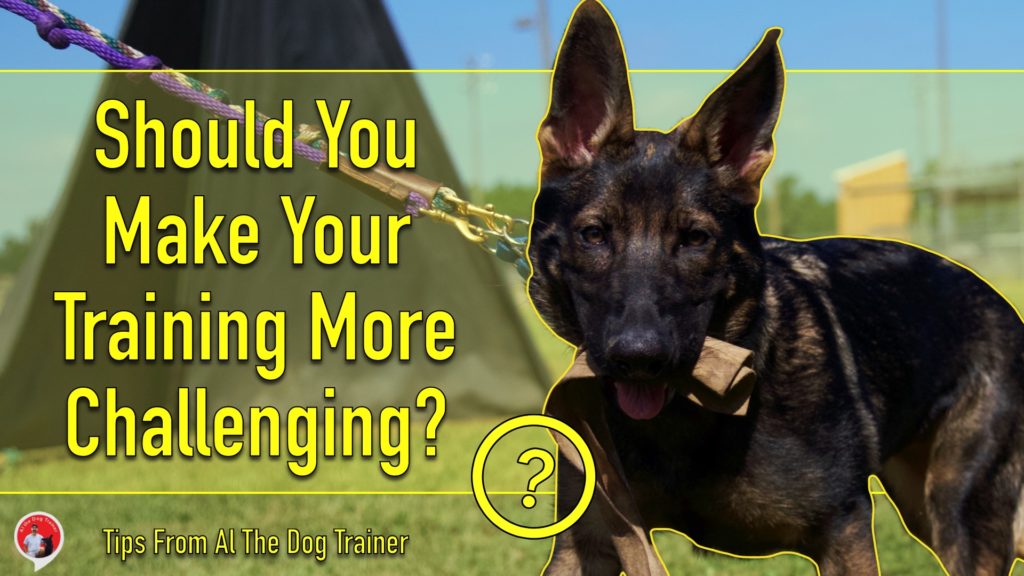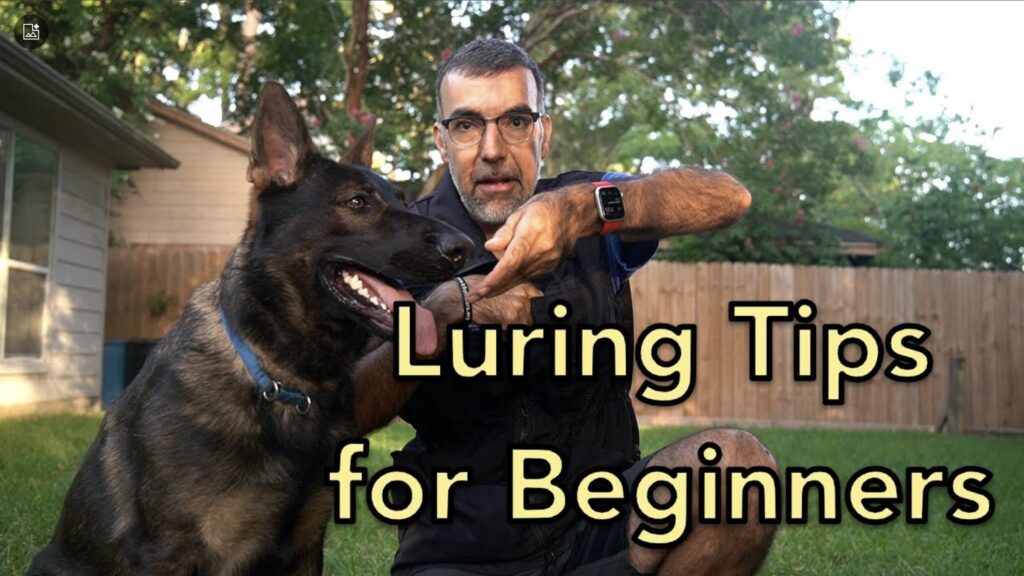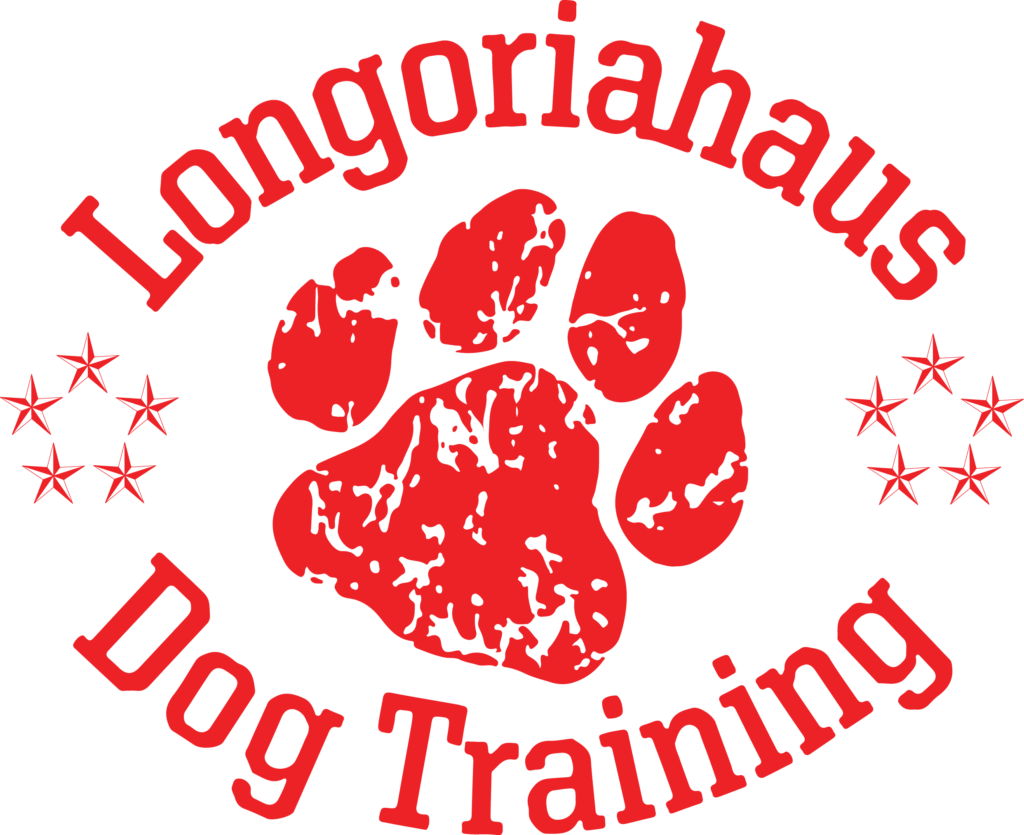
Today’s topic is: Should you make your training more challenging? So I’m a huge advocate of a rewards-based system. In a rewards-based system, your dog does the behavior, and after that, receives a reward. That’s something that your dog might like. That might include things like playing tug with you, playing fetch with you, getting a piece of food, getting a treat, hearing some praise, or being petted. There’s a lot of different ways that you can go about rewarding your dog.
Non-Reward
One aspect of rewards-based training is that sometimes if your dog does not do the behavior correctly, there might be non-reward. They don’t get the petting, the praise, the play, the food so forth, and so on. And so as you’re training your dog using a reward-based system, one of the questions that you might ask yourself is, should you make your training more challenging?
Okay, so I’m going to help you understand how I figure out if I should make my training more challenging. Here’s the basic rule. When I’m looking at the training, I’m looking to reward my dog 80-95% of the time for what I’m asking them to do. So if out of ten repetitions, I want my dog to stay in a sit as I walk away, and I want to reward them probably at least eight or nine out of ten times.
Error Rate
However, to get the reward rate at the level that I want to, I should have at least a couple of mistakes in there. So that way, the dog can see that there are things that they might mess up that are going against the rules of the thing that I am trying to show them. So as you’re going along in your training, you want to look at how high the error rate is getting.
You don’t want it to get too high. Let’s say that your error rate is getting into the 30s, the 40s, and 50%. It’s very likely that you bring unnecessary stress into the training. Your dog is starting to stress out that they can’t get it right. And can they even get it right now? Look, it’s sometimes difficult because we’ll find ourselves in circumstances that are beyond our dog’s ability and perhaps even beyond our ability.
But to the degree that it is possible, we should try to train proactively where the dog is consistently getting it right but is being challenged. So that way, they continue to grow and get better at the skills that we’re looking for them to have. Now, what’s the advantage of having an 80-90% rate as you go along in your proactive training approach?
Well, you’re going to increase the dog’s confidence. As you’re increasing your dog’s confidence it’s going to be easier to attain those higher levels if you’re working at like, let’s say, a 60%, it’s very likely that soon you’re going to run into an obstacle that’s going to be way too much for you and your dog. They’re not going to be able to succeed.
Bad Training Sessions
And you’re going to end up starting to have a string of lousy training sessions. Suppose you have one.. no big deal. If you have more than one, now, you’re starting to form some new habits not only in yourself but in your dog. And it begins to change the mentality of the animal, if not your psyche as well. One thing that I try to do, and it seems to be working well right now, is to create an exercise for one of my two young German Shepherds. Yes, that’s Alpha and Jericho.
I will work on it Monday through Saturday in my backyard and my neighborhood. But then I go to practice with my Shutzhund Club on Sunday. When I am with the club, I have the dog do the same thing that I have it at practicing the five to six days before. This way, the dog can have a high chance of being very good at getting it right and growing. Even though I’m going to add some distractions whenever I’m there, we both can go home happy and satisfied that we are growing. Now, it sometimes gets a little too tricky, and maybe I slightly overwhelm the dog, and we mess up.
I have to back up the training, but that’s okay. It’s okay to get it wrong one day, as long as you’re not putting strings of bad training sessions together.
Food For Thought
I’ll leave you guys with this one thought. Do you know that saying that practice makes perfect? I’ve also heard perfect practice makes perfect. Then there’s don’t practice bad things. So what is it? Well, it just seems to me that the best way to go about practicing is to practice daily. Pay attention if your dog is getting it right or wrong too much. And then to continually get better and not have two bad training sessions in a row.
I hope you found this helpful and can help you decide if you should make your training more challenging. Remember to visit my YouTube Channel for helpful videos and find more tips like this right here on www.longoriahausdogtraining.com.
Happy Training!





